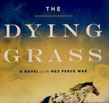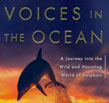 |
 |
01-23-09: 'The Steel Remains' US : Buying Local
I'm just about as much of a first edition geek as you could possibly imagine. There's a good reason for this. When a publisher like Victor Gollancz in the UK is the first to bat for a writer like Richard K. Morgan, buying first editions isn’t just a matter of buying three copies, slotting two away and hoping for a big value increase. It's also a matter of sending a financial message to that publisher that you support their editorial exploration, expansion and experimentation. We want the money guys at VG to let Simon Spanton do his thing unencumbered by their opinions.
By making sure we nab those UK first editions of Richard K. Morgan, Alistair Reynolds and John Meaney we send the only message that matters — money. And in return, we get new authors, like Scott Lynch. So far, so good. And it did take the US publishers a while to catch up, but they are pretty much on board now. So when Random House brings out a generously large edition of Richard Morgan's 'The Steel Remains' (Ballantine / Random House ; January 20, 2009 ; $26), it behooves us to send them a message as well, and to do so via our local independent booksellers. If we don’t, they'll close up shop. And we need those physical spaces for books in each and every community. We need those places to walk through and see stuff we don’t expect. Encounters with the unexpected are the source of our best reading experiences.
While, I'm at it, let me remind readers that comparatively speaking, reading is a pretty cheap form of entertainment. You might balk at the $26 sticker price for that Morgan hardcover at, well for me, Capitola Book Café or Bookshop Santa Cruz. But those dollars buy me many hours of entertainment. When you start sorting it out that way, reading proves it self to be a bargain. Moreover, as readers know, reading is a much more intensive and lasting experience. With the best books, you can go back and revisit the places your read about; reading is the closest thing to the artificial memory implants of Philip K. Dick's short story "We can Remember it For You Wholesale." (Made into a terrible movie that only occasionally twigs to what makes Dick's work worth reading and re-reading.) But reading is in some ways better than memory, because the reader must supply much of the experience that goes into the memory.
Morgan's latest novel is the first in a projected fantasy trilogy. In it he takes his gritty, intense and generally pissed-off perceptions out of his usual high-tech nightmarish future and instead explores a low-tech, nightmarish world of fantasy. In fact, it's not so much low-tech as a different tech — sorcerous magic replacing the usual cybernetic magic. Morgan always writes with an immediacy that enables readers to connect on a character level, and thus facilitate our immersion in his created world. And given that fantasy outsells science fiction, perhaps he'll get his shot on the bestseller lists this time around. Lord knows he deserves it.
But this won’t happen unless we get out there and spend a few shekels on this book, preferably at our local bookstores. Yes, you can get it cheaper online, but that's not the point. I'm pretty sure everyone has at least one decent independent that's close enough to patronize. It's a great space filled with books. You go there and buy a copy of Morgan's latest, and the chances are that they'll stock more. Random House will work faster, you've already supported the tastemakers over at VG, and Morgan will actually be able to finish his trilogy. And next time you go to your local bookstore, lo and behold, they'll have say, 'Midwinter,' or 'Eclipse 2.' That bookstore space just got a lot more friendly.
|
|
01-22-09: 'Dangerous Laughter' From Stephen Millhauser : Another Name for the Auto-Buy List
OK, bring on the gloom and doom for the publishing industry, reading is down, editors are falling by the wayside — I won't, I can't disagree with the facts. But as much as one might like to throw in the towel, or understand if the entire industry was going to just give the hell up, here it is 2009, and there are still fantastic, in every sense of the word, titles coming out. What’s more, today's choice is by an author whose work I've never read till this moment, but shoots straight to the center of the reading universe. Stephen Millhauser's 'Dangerous Laughter' (Alfred A. Knopf / Random House ; February 12, 2008 ; $24 ; Vintage / Random House ; February 10, 2009 ; $14.95) is a textbook example of the sort of fiction I love. Millhauser knows no boundaries when he writes; he sets his imagination free and writes what he sees. Readers can't help but be entranced, enthralled by the results
Stephen Millhauser should have hit the auto-buy list long ago. He won a Pulitzer Prize for his novel 'Martin Dressler.' His short story "Eisenheim the Illusionist" was adapted into a terrific movie, The Illusionist, whose clear virtue was the great story it told. 'Dangerous Laughter' came out last year as a hardcover, and now you can get it as a trade paperback. Chances are, no matter what the state of publishing, you’re going to think that this is a great way to spend fifteen bucks.
'Dangerous Laughter' is a collection of thirteen stories that demonstrate just how mind-grabbing great fiction can be. Structured like a triple-feature movie, Millhauser's book is instantly immersive. From the first sentences of the "Opening Cartoon," "Cat 'n' Mouse," Millhauser plunges the reader into a powerful stream of words, a perfect virtual world built out of language. Millhauser has a very specific knack for taking his worlds very seriously while never taking himself seriously. Humor and horror, delight and terror, joy and despondency, absurdity and clarity co-exist in stories that bring our contentious inner and outer worlds to life. Plus, everything is a lot of fun.
For example, the aforementioned "Cat 'n' Mouse" explores the inner lives of Tom and Jerry. Now, they're never mentioned by name, but who could you not love these ultra-violent cartoon characters who reveal surprising complexity even while they're trying to kill one another? The mouse contemplates the cat's freedom to fail, while the cat seeks transformation in the face of certain failure. These characters know they cannot define or change themselves. But there's dynamite, lots of it. Millhauser seamlessly evokes the profound in the midst of the absurd, and still makes you laugh. This is my kind of fiction.
The three "features" that follow are all anthology movies; think The Twilight Zone as written by Jorge Luis Borges or Tales from the Crypt by Gabriel Garcia Marquez. They're complex and layered and densely textured. "In the Reign of Harad IV" is a story that itself almost mirrors the collection. The Master is the King's miniaturist, tasked with, "supplying court ladies with carved ivory plants and triple-headed sea monsters for their cabinets of delight." But he also has to take care of the King's old toy palace, and in his pursuit of perfection, he keeps reducing the size of his models. Millhauser's miniatures are just as perfect as those he describes. He knows how to create a complete and detailed world in a few deft strokes. He knows that there is always something new under the sun; moreover he can find and write well about it.
|
|
01-21-09: Cory Doctorow's 'Content' : Worth Killing Trees
Cory Doctorow is anything but content. He's an agitator, a stirring whirlwind of ideas, actions, outrage, research and imagination. Happy? Sure, but content — never. So what's he doing with a book titled 'Content' (Tachyon Publications ; September 9, 2008 ; $14.95)? Stirring the pot as usual, with a collection of provocative essays, most of which you can read for free on the web. So why kill even part of a tree to buy the book?
It's the "bookness" of this book that's the key to its appeal. Sure, most if not all this content is out there for you to grab free. If you were feeling frisky, you could even print it out so you could read it more easily in the can, or the car, or at the taqueria. But no matter where else you read it, it wouldn’t be reading a book. And that's an important, no a critical distinction.
When you're reading something on your computer, say, this review flogging a book that's been flogged so much only the children of the tinfoil hat millionaires could have missed it, your attention is diffused. Not matter how much you try to laser it into Doctorow's words, the fact those words are on a computer means that there's something else you can look at, read or watch. By definition, then, reading on a computer means you're going to miss something.
Now, Doctorow knows this and writes his clever essays with enough brevity to beget wit and intelligence to ensure engagement. But something happens when you pick up a book that doesn't happen, can't happen when you look at a computer. By picking up a book, you've made a deal with yourself. You've promised yourself that you're only going to look at it, you've given yourself a vacation from other tasks to focus on the reading experience. That's why reading a book is so immersive, enjoyable and entertaining. You're in one place and one place only, the first and most important virtual reality ever created, "reading space." Otherwise: you’re not reading.
And once you set your mind to reading 'Content,' you'll find a pretty damn great example of why you should read, a pure example. There are no plots or characters here, just, well, content, information as a verb, suggests intro-writer John Perry Barlow. The words are utterly useless and meaningless until your brains picks 'em up and shakes 'em out. Doctorow's war on DRM, his commentary on net life and politics, they're all so smart they can't help but make you smile. If and / or when this world is reduced to a smoking heap of radioactive rubble, Doctorow will emerge and opine about it in a way that will make you smile even if your next act is less life affirming.
The bookness of this collection offers other advantages beyond the focus factor of reading a book. Tachyon has been making books for a while now and they do a hell of a good job. This is a compact, well-printed, easily carried piece of literature. It's not going to cramp your style in the sushi bar, though I suggest the BBQ joint out in Castroville is a better place to read it. There's a thematic advantage as well. Here you have all this content, sequenced by the author. You can read it in sequence or impose your own. You don’t have to look thither and yon to read "How Copyright Broke" then "The Future of Ignoring Things." Strike me down for even thinking it, let alone committing it to pixels, but in a sense this particular book is a black hole, a mumblemumble if you will, of Doctorow-think. It's a self-contained universe of Cory.
If you’re a corporate buyer, make sure you buy copies for the lobby and restrooms. If you're an individual, you just need one copy. Or maybe two or three. Crisp, tight paperbacks. Because sure, lots of this stuff is online. But you won't be able to — you won't want to — hand your kids the laptop or desktop you first read this stuff on. Hand them a book, this book. You can't make them think, but you can let them think.
|
|
01-20-09: Martin E. Marty Puts 'The Christian World' in Perspective : Twenty Centuries in 236 Pages
It's easy to think you know something that's all around you, especially when it spends a fair amount of time trying to impress you that It — and Only It — Is Right. In this case, we're talking about the Christian religion, which is so familiar to us all that it almost fades to invisibility. But history is a lot more complicated than one might be led to believe, and often the prospect of getting things straight is so daunting that, well, we never bother to try. But if you've some interest in knowing how this world runs, and a couple of days to spare, you can fill in a lot of blanks by reading 'The Christian World: A Global History' (Modern Library / Random House ; January 15, 2009; $15.00) by Martin E. Marty. This is the sort of religious tract that is well worth reading.
History books come in all sizes, and most of them are usually way too big. I'm not opposed to the occasional giant book; I love to immerse myself. But while Martin E. Marty's 'The Christian World: A Global History' will immerse you in the origins, spread and history of the Christian religion, it will not require a lifetime commitment. At 236 pages (plus a VERY useful glossary and a thorough index), 'The Christian World' will knock your socks off with a really interesting global perspective on the global, and this emphasis is important, rise and spread of the Christian religion.
Marty's book is admirably organized and written in direct, easy-to-read prose. He's a historian talking about religion, so don’t look for spiritual messages, look for a historical, and historian's analysis. After a cogent introduction that sets the straightforward tone, you'll a chronology of events. Then he offers a great vision of the Jewish beginnings of Christianity. Marty will sort out the Gospels for you and take you through the launch of a decidedly global juggernaut.
From then on out, the book is divided into geographically-classified "episodes." While we Murricans and Youropans like to think we've got a lock on Christianity, Marty begs to differ. Straight out of the box, he takes us to Asia, then Africa. This is definitely not the standard-issue vision of the Christianity and it is startlingly informative. Only after spending time in the larger continents does he get to what likes to think of itself as the continent, that is Europe. — for two episodes. And then to North America, Latin America, and back to Africa and Asia.
From the "Nine Monks" (or "Nine Saints") of Syria (480 AD) to Robert Morrison, who spent seven years in India without achieving a single baptism, youre going to walk away from this book with new, deep vision of our world. Not bad for a two hundred pages and change. The Glossary and Index will keep this one evergreen as a research tool for writers, while the whole overview will simply entertain you with a wealth of stuff that will make you wonder, mostly: why dont they teach it this way?
If you want to go deep, you always can, but if you want to knock yourself upside the head with a crystal-clear vision of whats what with the Christian religion, you really can't get better bang for the buck than this book. Do the math; 2000 years, divided by 236 pages, means you're getting roughly 8.47 years per page. Not a bad way to travel through time. Or put it this way; 2000 years for fifteen bucks means that every dollar you spend gets you 133 years, four months of history. In point of fact, here's a book that offers you the opportunity to buy the world.
|
|
01-19-09: : John Pipkin's 'Woodsburner' : Thoreau Before Walden
There are monuments and mountains in our literary landscape. There are deserts and lush forests, rivers and streams, super-highways chocked with traffic and quiet suburbs where lights burn late into the night. There are places that are little-known and those that are universally known. But by virtue of the process of publication, each of these places comes to be in a single moment, the moment the book is published. There is little innate sense of how each place came to be. Walden, for example, is given to us whole cloth, in one book of the same name by Henry David Thoreau. It is synonymous with his name, yet the man who created Walden the place via 'Walden' the book was not always the man who lived there. Thoreau himself arrived in Walden, and proceeded to create the man who wrote 'Walden.' The process by which he did so involved experiences rather different than what readers might expect.
Given that Henry David Thoreau is the subject and focal character, John Pipkin's 'Woodsburner' is probably not what you expect it to be. That rustic cover with the hint of flame, the relic title font, all say to this reader at least, that we're in for a somber, serious and ultimately well-meaning but dull affair. But Thoreau didn't follow the life-path expected of him. He was supposed to spend his life designing pencils, fercrissakes, not embed himself as a permanent part of our shared literary landscape. (Arguably, he might have achieved the same end designing pencils, in a sense.) Pipkin evades our expectations as well.
'Woodsburner' fires off from a real incident in Thoreau's life. In 1844, a year before he built the cabin on Walden Pond, Thoreau managed to accidentally start a forest fire that razed three hundred acres of Concord woods. It's a gripping and rather comic scene that sets the perfect tone for this debut novel. The vision of Thoreau and his companion, Edward Sherman Hoar, running about trying to stomp out the flames as they leap from branch to branch, is written with deft humor and restrained poetry. It will quickly extinguish your expectations of excessive meaning. We then start to see the world through the eyes of three other complicated and entertaining characters. Oddmund Hus is an immigrant in love with Emma Woburn and not unaware of, "her immense and impractical bosom." Eliot Calvert is a bookseller and the sort of writer who carries a notebook with him to write down the phrases like the opening of his play, "Oh what a confounded fretfulness is this life," phrases he knows will one day be part of his masterwork. Then there's the ever-delightful Caleb Dowdy, everyone's favorite fire-spitting, brimstone-belching preacher who just happens to have a proclivity for opium and a much more complex morality that that which he preaches. In four fine opening chapters, Pipkin lets you know that he's not here to drone on, but to tell a gripping, ripping yarn that just happens to involve a literary legend.
This is not to say that 'Woodsburner' is without import or intellect, but rather, that Pipkin has the literary skills to explore matters of import and intellect with wit and verve and imagination. 'Woodsburner' creates figures as complicated and self-reflexive as the people in our lives and layers them into an actual literary legacy. It's an impressive performance using figures real and imagined to offer a new perspective on the real imagination of Thoreau and his country, his landscape — and our landscape as well.
|
|
 |
|
|
|




